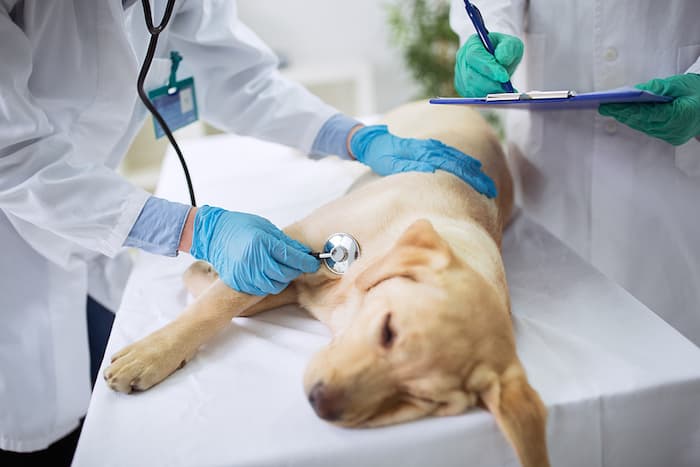Most dog parents are very in tune with the behaviors and routines of their dogs. Just like with people, we notice when our dogs are moody when they’re excited or bored, and we have a sense when there’s something wrong. It’s usually pretty easy to spot when our dog has allergies. They may be scratching and biting at their skin, they might have some type of stomach upset, or maybe even erupt into bouts of sneezing.
Whatever the symptom, dog allergies must be treated seriously before they develop into a more severe condition. Many breeds, like the Dachshund, for example, are quite prone to allergies. If you’re looking to take home a new miniature Dachshund puppy, knowing how to address these types of issues is a good skill to have.
So that we know how to deal with dog allergies, we’ll first have to learn about each type.
Skin Allergies
Skin allergies, also called allergic dermatitis, are the most common type of allergies that dogs experience. The offending allergen usually causes irritation through inhalation, though it may also come through direct skin contact with your dog. Dog skin allergies are usually either caused by flea allergy dermatitis, food allergies, or environmental allergens.
With flea allergy dermatitis, your dog may be allergic to flea saliva – so when they get bitten by a flea, they get much more itchy than normal. You may notice that their skin becomes red and swollen over a large area – with possible scabbing due to being scratched or bitten as the dog tries to scratch for relief.
Food allergies can also cause your dog’s skin to itch – especially around the ears and on the paws. Stomach issues can also manifest, depending on the amount of the offending food that they’ve eaten.
Environmental allergens are a broad category but are common things such as dust or pollen. These can cause atopic dermatitis, which makes the skin red and itchy. The reaction may appear like a scaly rash, usually around the paws and ears, like with food allergies. Some environmental allergens are seasonal, so you may notice that your dog only develops allergies in certain months out of the year.
Food Allergies
There’s a distinction to be made between a true food allergy and food sensitivity. A true food allergy will involve an immune response, generally involving the dog’s skin and gastrointestinal system. Like in people, severe food allergies may cause anaphylaxis to occur. True food allergies aren’t actually very common.
Food sensitivity or food intolerance is much more common in dogs, as the terms cover adverse food reactions that do not involve the immune system. Food sensitivity or intolerance usually occurs upon initial exposure to the offending ingredient (typically chicken, eggs, wheat, beef, or any other of a number of foods). Food allergies, on the other hand, typically develop over time with repeated exposure to the ingredient.
Acute Allergies
These are much more dramatic in presentation and can be shocking for anyone who hasn’t yet experienced it. An acute allergic reaction is a severe reaction to a specific allergen and may cause the dog to go into anaphylactic shock. It’s why we are told to watch the dog’s reaction to vaccines in case they develop an acute allergic reaction. There can be massive, immediate swelling, especially around the face. Fortunately, this type of reaction is rare.
Most Common Allergy Symptoms
- Red or itchy skin
- Raw or bleeding skin due to persistent scratching and licking of the area
- Fur loss or patches
- Itchy or watery eyes
- Sneezing or coughing
- Diarrhea or vomiting
Multiple symptoms in combination are usually a good indicator that your dog has an allergic reaction to something.
Dealing with Dog Allergies
Since there’s no actual cure for allergies, treatment is usually in the form of minimizing allergic reactions or eliminating the trigger as much as possible. Managing the allergies means an ongoing process to find what works for your specific dog. As with any health condition, you should be consulting with your vet to see what can be done for your pooch.
For skin allergies, each of the three different triggers has a different management strategy involved.
Flea allergies are generally dealt with by putting your dog on an effective form of flea control. Since this is also a good idea for non-allergic dogs, most dog owners will already be doing this.
Food allergies are addressed with a specific diet that cuts out the offending allergen completely. Hypoallergenic diets are a common treatment strategy for a number of dog illnesses, so there are numerous options for your dog. Your vet should be able to give you specific recommendations.
Environmental allergies can be much more difficult to deal with, as you can’t always control what your dog is exposed to. Depending on the severity of your dog’s reaction, there may be medications that help with your dog’s allergies, whether as a regular part of their routine or to address allergy attacks.
We have a generalized set of things we like to do to keep our dogs clear of allergens:
- Keep the house clean using enzymatic cleaners, not harsh chemical agents. Enzymatic cleaners are non-toxic and biodegradable, so they’re safe to use all around the house. As a bonus, it’s not too hard to make your own DIY enzymatic cleaner – this means you can control what ingredients go into your cleaner and you can avoid any allergens.
- Keep an eye on pollen and allergen counts. There are numerous websites and apps to keep you updated on the current pollen counts and forecasts, so you can be ready for any allergy flare-ups your dog may experience.
- Keep your dog clean after stepping outside. Allergic reactions usually get worse once the allergen has found its way into your dog’s bedding and food. This can be avoided by giving your dog a good wipe down after any trip outdoors – pollen and other allergens are usually carried in on their paws. There is any number of dog paw washing gadgets and doggy wipes to help keep your dog’s paws clean.
The key takeaway here is that dog allergies aren’t the end of the world – there are many ways to minimize the impact of the allergy on your pet. Work with your vet to find what is effective and reasonable for you as a dog owner. With the right approach, there could be very little impact on your dog’s wellbeing if the allergy is well-managed.



